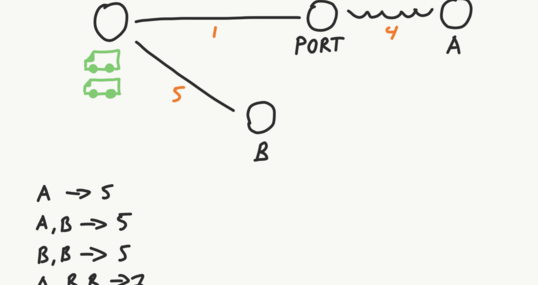We have a few new models to talk about, so let’s get started:
Grok2 from X.AI - Suddenly in TOP 15
Gemini 1.5 Flash 8B - Future Perfect
New Claude Sonnet 3.5 and Haiku 3.5 - Getting better
LLM Benchmarks | Oktober 2024
The benchmarks evaluate the models in terms of their suitability for digital product development. The higher the score, the better.
☁️ - Cloud models with proprietary license
✅ - Open source models that can be run locally without restrictions
🦙 - Local models with Llama license
Can the model generate code and help with programming?
The estimated cost of running the workload. For cloud-based models, we calculate the cost according to the pricing. For on-premises models, we estimate the cost based on GPU requirements for each model, GPU rental cost, model speed, and operational overhead.
How well does the model support work with product catalogs and marketplaces?
How well can the model work with large documents and knowledge bases?
Can the model easily interact with external APIs, services and plugins?
How well can the model support marketing activities, e.g. brainstorming, idea generation and text generation?
How well can the model reason and draw conclusions in a given context?
The "Speed" column indicates the estimated speed of the model in requests per second (without batching). The higher the speed, the better.
| Model | Code | Crm | Docs | Integrate | Marketing | Reason | Final | cost | Speed |
|---|---|---|---|---|---|---|---|---|---|
| 1. GPT o1-preview v1/2024-09-12 ☁️ | 95 | 92 | 94 | 96 | 88 | 87 | 92 | 52.32 € | 0.08 rps |
| 2. GPT o1-mini v1/2024-09-12 ☁️ | 93 | 96 | 94 | 85 | 82 | 87 | 90 | 8.15 € | 0.16 rps |
| 3. Google Gemini 1.5 Pro v2 ☁️ | 86 | 97 | 94 | 100 | 78 | 74 | 88 | 1.00 € | 1.18 rps |
| 4. GPT-4o v1/2024-05-13 ☁️ | 90 | 96 | 100 | 89 | 78 | 74 | 88 | 1.21 € | 1.44 rps |
| 5. GPT-4o v3/dyn-2024-08-13 ☁️ | 90 | 97 | 100 | 81 | 79 | 78 | 88 | 1.22 € | 1.21 rps |
| 6. GPT-4 Turbo v5/2024-04-09 ☁️ | 86 | 99 | 98 | 100 | 88 | 43 | 86 | 2.45 € | 0.84 rps |
| 7. GPT-4o v2/2024-08-06 ☁️ | 90 | 84 | 97 | 92 | 82 | 59 | 84 | 0.63 € | 1.49 rps |
| 8. Google Gemini 1.5 Pro 0801 ☁️ | 84 | 92 | 79 | 100 | 70 | 74 | 83 | 0.90 € | 0.83 rps |
| 9. Qwen 2.5 72B Instruct ⚠️ | 79 | 92 | 94 | 100 | 71 | 59 | 83 | 0.10 € | 0.66 rps |
| 10. Llama 3.1 405B Hermes 3🦙 | 68 | 93 | 89 | 100 | 88 | 53 | 82 | 0.54 € | 0.49 rps |
| 11. Claude 3.5 Sonnet v2 ☁️ | 82 | 97 | 93 | 85 | 71 | 57 | 81 | 0.95 € | 0.09 rps |
| 12. GPT-4 v1/0314 ☁️ | 90 | 88 | 98 | 70 | 88 | 45 | 80 | 7.04 € | 1.31 rps |
| 13. X-AI Grok 2 ⚠️ | 63 | 93 | 87 | 89 | 88 | 58 | 79 | 1.03 € | 0.31 rps |
| 14. GPT-4 v2/0613 ☁️ | 90 | 83 | 95 | 70 | 88 | 45 | 78 | 7.04 € | 2.16 rps |
| 15. Claude 3 Opus ☁️ | 69 | 88 | 100 | 78 | 76 | 58 | 78 | 4.69 € | 0.41 rps |
| 16. Claude 3.5 Sonnet v1 ☁️ | 72 | 83 | 89 | 85 | 80 | 58 | 78 | 0.94 € | 0.09 rps |
| 17. GPT-4 Turbo v4/0125-preview ☁️ | 66 | 97 | 100 | 85 | 75 | 43 | 78 | 2.45 € | 0.84 rps |
| 18. GPT-4o Mini ☁️ | 63 | 87 | 80 | 70 | 100 | 65 | 78 | 0.04 € | 1.46 rps |
| 19. Meta Llama3.1 405B Instruct🦙 | 81 | 93 | 92 | 70 | 75 | 48 | 76 | 2.39 € | 1.16 rps |
| 20. GPT-4 Turbo v3/1106-preview ☁️ | 66 | 75 | 98 | 70 | 88 | 60 | 76 | 2.46 € | 0.68 rps |
| 21. DeepSeek v2.5 236B ⚠️ | 57 | 80 | 91 | 78 | 88 | 57 | 75 | 0.03 € | 0.42 rps |
| 22. Google Gemini 1.5 Flash v2 ☁️ | 64 | 96 | 89 | 75 | 81 | 44 | 75 | 0.06 € | 2.01 rps |
| 23. Google Gemini 1.5 Pro 0409 ☁️ | 68 | 97 | 96 | 85 | 75 | 26 | 74 | 0.95 € | 0.59 rps |
| 24. Meta Llama 3.1 70B Instruct f16🦙 | 74 | 89 | 90 | 70 | 75 | 48 | 74 | 1.79 € | 0.90 rps |
| 25. Google Gemini Flash 1.5 8B ☁️ | 70 | 93 | 78 | 69 | 76 | 48 | 72 | 0.01 € | 1.19 rps |
| 26. GPT-3.5 v2/0613 ☁️ | 68 | 81 | 73 | 81 | 81 | 50 | 72 | 0.34 € | 1.46 rps |
| 27. Meta Llama 3 70B Instruct🦙 | 81 | 83 | 84 | 60 | 81 | 45 | 72 | 0.06 € | 0.85 rps |
| 28. Mistral Large 123B v2/2407 ☁️ | 68 | 79 | 68 | 75 | 75 | 70 | 72 | 0.86 € | 1.02 rps |
| 29. Google Gemini 1.5 Pro 0514 ☁️ | 73 | 96 | 79 | 100 | 25 | 60 | 72 | 1.07 € | 0.92 rps |
| 30. Google Gemini 1.5 Flash 0514 ☁️ | 32 | 97 | 100 | 75 | 72 | 52 | 71 | 0.06 € | 1.77 rps |
| 31. Google Gemini 1.0 Pro ☁️ | 66 | 86 | 83 | 78 | 88 | 28 | 71 | 0.37 € | 1.36 rps |
| 32. Meta Llama 3.2 90B Vision🦙 | 74 | 84 | 87 | 78 | 71 | 32 | 71 | 0.23 € | 1.10 rps |
| 33. GPT-3.5 v3/1106 ☁️ | 68 | 70 | 71 | 78 | 78 | 58 | 70 | 0.24 € | 2.33 rps |
| 34. GPT-3.5 v4/0125 ☁️ | 63 | 87 | 71 | 78 | 78 | 43 | 70 | 0.12 € | 1.43 rps |
| 35. Claude 3.5 Haiku ☁️ | 52 | 80 | 72 | 70 | 75 | 68 | 70 | 0.32 € | 1.24 rps |
| 36. Qwen1.5 32B Chat f16 ⚠️ | 70 | 90 | 82 | 78 | 78 | 20 | 69 | 0.97 € | 1.66 rps |
| 37. Cohere Command R+ ☁️ | 63 | 80 | 76 | 70 | 70 | 58 | 69 | 0.83 € | 1.90 rps |
| 38. Gemma 2 27B IT ⚠️ | 61 | 72 | 87 | 70 | 89 | 32 | 69 | 0.07 € | 0.90 rps |
| 39. Mistral 7B OpenChat-3.5 v3 0106 f16 ✅ | 68 | 87 | 67 | 70 | 88 | 25 | 67 | 0.32 € | 3.39 rps |
| 40. Gemma 7B OpenChat-3.5 v3 0106 f16 ✅ | 63 | 67 | 84 | 60 | 81 | 46 | 67 | 0.21 € | 5.09 rps |
| 41. Meta Llama 3 8B Instruct f16🦙 | 79 | 62 | 68 | 70 | 80 | 41 | 67 | 0.32 € | 3.33 rps |
| 42. Mistral 7B OpenChat-3.5 v2 1210 f16 ✅ | 63 | 73 | 72 | 69 | 88 | 30 | 66 | 0.32 € | 3.40 rps |
| 43. Mistral 7B OpenChat-3.5 v1 f16 ✅ | 58 | 72 | 72 | 70 | 88 | 33 | 65 | 0.49 € | 2.20 rps |
| 44. GPT-3.5-instruct 0914 ☁️ | 47 | 92 | 69 | 62 | 88 | 33 | 65 | 0.35 € | 2.15 rps |
| 45. GPT-3.5 v1/0301 ☁️ | 55 | 82 | 69 | 78 | 82 | 26 | 65 | 0.35 € | 4.12 rps |
| 46. Llama 3 8B OpenChat-3.6 20240522 f16 ✅ | 76 | 51 | 76 | 60 | 88 | 38 | 65 | 0.28 € | 3.79 rps |
| 47. Mistral Nemo 12B v1/2407 ☁️ | 54 | 58 | 51 | 100 | 75 | 49 | 64 | 0.03 € | 1.22 rps |
| 48. Meta Llama 3.2 11B Vision🦙 | 70 | 71 | 65 | 70 | 71 | 36 | 64 | 0.04 € | 1.49 rps |
| 49. Starling 7B-alpha f16 ⚠️ | 58 | 66 | 67 | 70 | 88 | 34 | 64 | 0.58 € | 1.85 rps |
| 50. Qwen 2.5 7B Instruct ⚠️ | 48 | 77 | 80 | 60 | 69 | 47 | 63 | 0.07 € | 1.25 rps |
| 51. Llama 3 8B Hermes 2 Theta🦙 | 61 | 73 | 74 | 70 | 85 | 16 | 63 | 0.05 € | 0.55 rps |
| 52. Yi 1.5 34B Chat f16 ⚠️ | 47 | 78 | 70 | 70 | 86 | 26 | 63 | 1.18 € | 1.37 rps |
| 53. Claude 3 Haiku ☁️ | 64 | 69 | 64 | 70 | 75 | 35 | 63 | 0.08 € | 0.52 rps |
| 54. Liquid: LFM 40B MoE ⚠️ | 72 | 69 | 65 | 60 | 82 | 24 | 62 | 0.00 € | 1.45 rps |
| 55. Meta Llama 3.1 8B Instruct f16🦙 | 57 | 74 | 62 | 70 | 74 | 32 | 61 | 0.45 € | 2.41 rps |
| 56. Qwen2 7B Instruct f32 ⚠️ | 50 | 81 | 81 | 60 | 66 | 31 | 61 | 0.46 € | 2.36 rps |
| 57. Mistral Small v3/2409 ☁️ | 43 | 75 | 71 | 75 | 75 | 26 | 61 | 0.06 € | 0.81 rps |
| 58. Claude 3 Sonnet ☁️ | 72 | 41 | 74 | 70 | 78 | 28 | 61 | 0.95 € | 0.85 rps |
| 59. Mixtral 8x22B API (Instruct) ☁️ | 53 | 62 | 62 | 100 | 75 | 7 | 60 | 0.17 € | 3.12 rps |
| 60. Mistral Pixtral 12B ✅ | 53 | 69 | 73 | 60 | 64 | 40 | 60 | 0.03 € | 0.83 rps |
| 61. Codestral Mamba 7B v1 ✅ | 53 | 66 | 51 | 100 | 71 | 17 | 60 | 0.30 € | 2.82 rps |
| 62. Inflection 3 Productivity ⚠️ | 46 | 59 | 39 | 70 | 79 | 61 | 59 | 0.92 € | 0.17 rps |
| 63. Anthropic Claude Instant v1.2 ☁️ | 58 | 75 | 65 | 75 | 65 | 16 | 59 | 2.10 € | 1.49 rps |
| 64. Cohere Command R ☁️ | 45 | 66 | 57 | 70 | 84 | 27 | 58 | 0.13 € | 2.50 rps |
| 65. Anthropic Claude v2.0 ☁️ | 63 | 52 | 55 | 60 | 84 | 34 | 58 | 2.19 € | 0.40 rps |
| 66. Qwen1.5 7B Chat f16 ⚠️ | 56 | 81 | 60 | 50 | 60 | 36 | 57 | 0.29 € | 3.76 rps |
| 67. Mistral Large v1/2402 ☁️ | 37 | 49 | 70 | 78 | 84 | 25 | 57 | 0.58 € | 2.11 rps |
| 68. Microsoft WizardLM 2 8x22B ⚠️ | 48 | 76 | 79 | 50 | 62 | 22 | 56 | 0.13 € | 0.70 rps |
| 69. Qwen1.5 14B Chat f16 ⚠️ | 50 | 58 | 51 | 70 | 84 | 22 | 56 | 0.36 € | 3.03 rps |
| 70. MistralAI Ministral 8B ✅ | 56 | 55 | 41 | 85 | 68 | 30 | 56 | 0.02 € | 1.02 rps |
| 71. MistralAI Ministral 3B ✅ | 50 | 48 | 39 | 92 | 60 | 41 | 55 | 0.01 € | 1.02 rps |
| 72. Anthropic Claude v2.1 ☁️ | 29 | 58 | 59 | 78 | 75 | 32 | 55 | 2.25 € | 0.35 rps |
| 73. Llama2 13B Vicuna-1.5 f16🦙 | 50 | 37 | 55 | 60 | 82 | 37 | 53 | 0.99 € | 1.09 rps |
| 74. Mistral 7B Instruct v0.1 f16 ☁️ | 34 | 71 | 69 | 59 | 62 | 23 | 53 | 0.75 € | 1.43 rps |
| 75. Mistral 7B OpenOrca f16 ☁️ | 54 | 57 | 76 | 25 | 78 | 27 | 53 | 0.41 € | 2.65 rps |
| 76. Meta Llama 3.2 3B🦙 | 52 | 71 | 66 | 70 | 44 | 14 | 53 | 0.01 € | 1.25 rps |
| 77. Google Recurrent Gemma 9B IT f16 ⚠️ | 58 | 27 | 71 | 60 | 56 | 23 | 49 | 0.89 € | 1.21 rps |
| 78. Codestral 22B v1 ✅ | 38 | 47 | 44 | 78 | 66 | 13 | 48 | 0.06 € | 4.03 rps |
| 79. Llama2 13B Hermes f16🦙 | 50 | 24 | 37 | 74 | 60 | 42 | 48 | 1.00 € | 1.07 rps |
| 80. IBM Granite 34B Code Instruct f16 ☁️ | 63 | 49 | 34 | 70 | 57 | 7 | 47 | 1.07 € | 1.51 rps |
| 81. Mistral Small v2/2402 ☁️ | 33 | 42 | 45 | 92 | 56 | 8 | 46 | 0.06 € | 3.21 rps |
| 82. DBRX 132B Instruct ⚠️ | 43 | 39 | 43 | 77 | 59 | 10 | 45 | 0.26 € | 1.31 rps |
| 83. NVIDIA Llama 3.1 Nemotron 70B Instruct🦙 | 68 | 54 | 25 | 74 | 28 | 21 | 45 | 0.09 € | 0.53 rps |
| 84. Mistral Medium v1/2312 ☁️ | 41 | 43 | 44 | 61 | 62 | 12 | 44 | 0.81 € | 0.35 rps |
| 85. Meta Llama 3.2 1B🦙 | 32 | 40 | 33 | 40 | 68 | 51 | 44 | 0.02 € | 1.69 rps |
| 86. Llama2 13B Puffin f16🦙 | 37 | 15 | 44 | 70 | 56 | 39 | 43 | 4.70 € | 0.23 rps |
| 87. Mistral Small v1/2312 (Mixtral) ☁️ | 10 | 67 | 63 | 52 | 56 | 8 | 43 | 0.06 € | 2.21 rps |
| 88. Microsoft WizardLM 2 7B ⚠️ | 53 | 34 | 42 | 59 | 53 | 13 | 42 | 0.02 € | 0.89 rps |
| 89. Mistral Tiny v1/2312 (7B Instruct v0.2) ☁️ | 22 | 47 | 59 | 38 | 62 | 8 | 39 | 0.05 € | 2.39 rps |
| 90. Gemma 2 9B IT ⚠️ | 45 | 25 | 47 | 34 | 68 | 13 | 38 | 0.02 € | 0.88 rps |
| 91. Meta Llama2 13B chat f16🦙 | 22 | 38 | 17 | 60 | 75 | 6 | 36 | 0.75 € | 1.44 rps |
| 92. Mistral 7B Zephyr-β f16 ✅ | 37 | 34 | 46 | 59 | 29 | 4 | 35 | 0.46 € | 2.34 rps |
| 93. Meta Llama2 7B chat f16🦙 | 22 | 33 | 20 | 60 | 50 | 18 | 34 | 0.56 € | 1.93 rps |
| 94. Mistral 7B Notus-v1 f16 ⚠️ | 10 | 54 | 25 | 52 | 48 | 4 | 32 | 0.75 € | 1.43 rps |
| 95. Orca 2 13B f16 ⚠️ | 18 | 22 | 32 | 22 | 67 | 20 | 30 | 0.95 € | 1.14 rps |
| 96. Mistral 7B v0.1 f16 ☁️ | 0 | 9 | 48 | 53 | 52 | 12 | 29 | 0.87 € | 1.23 rps |
| 97. Mistral 7B Instruct v0.2 f16 ☁️ | 11 | 30 | 54 | 12 | 58 | 8 | 29 | 0.96 € | 1.12 rps |
| 98. Google Gemma 2B IT f16 ⚠️ | 33 | 28 | 16 | 57 | 15 | 20 | 28 | 0.30 € | 3.54 rps |
| 99. Microsoft Phi 3 Medium 4K Instruct 14B f16 ⚠️ | 5 | 34 | 30 | 11 | 47 | 8 | 22 | 0.82 € | 1.32 rps |
| 100. Orca 2 7B f16 ⚠️ | 22 | 0 | 26 | 20 | 52 | 4 | 21 | 0.78 € | 1.38 rps |
| 101. Google Gemma 7B IT f16 ⚠️ | 0 | 0 | 0 | 9 | 62 | 0 | 12 | 0.99 € | 1.08 rps |
| 102. Meta Llama2 7B f16🦙 | 0 | 5 | 22 | 3 | 28 | 2 | 10 | 0.95 € | 1.13 rps |
| 103. Yi 1.5 9B Chat f16 ⚠️ | 0 | 4 | 29 | 9 | 0 | 8 | 8 | 1.41 € | 0.76 rps |
Grok 2 Beta from X-AI
This wasn’t expected, but the second version of Grok from X-AI suddenly started making sense (the previous one was nearly useless). Grok 2 Beta made its way into TOP 15. The model performed overall quite well on tasks extracted from LLM products in our benchmark. Even its Reason capability is quite nice.
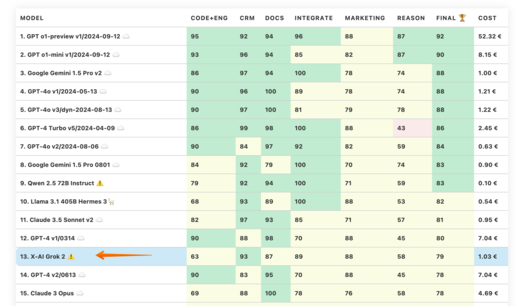
The model is running close to older versions of GPT-4, but it is still worse than the Qwen 2.5 72B instruct which you can download and run on your own hardware. Nonetheless the news is great. Pretty much any company can make it into the TOP-20 of our benchmark, if they have enough diverse data and access to compute capability for the training.
Gemini 1.5 Flash 8B - Future Perfect
In the LLM Benchmark for September we’ve talked about new models in Llama 3.2 series. They have really pushed state of the art for the local models back then. The progress doesn’t stop there.
Google has released new Gemini 1.5 Flash model. It shows nice results on our product benchmark. This 8B model performs on the level of GPT3.5 or Llama 3 70B, almost catching up with the normal 1.5 Flash.
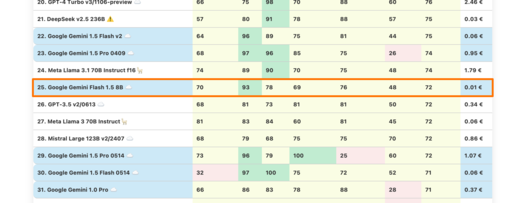
The model also illustrates the progress of Google in LLM development. This is the cheapest model that ranks quite high compared even to the other Gemini Pro LLMs released in previous months.
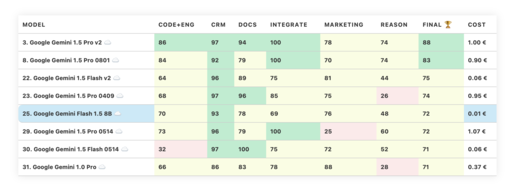
The biggest limitation of this model: it is closed. Even though we know its size - 8B, it isn’t possible to download the weights and run things locally.
However, Gemini 1.5 Flash can be used quite cheaply. Plus, as history tells us, whatever one company has achieved, another company could soon repeat. So we’ll be waiting for more small models of this quality, preferably locally-capable.
Claude Sonnet 3.5 and Haiku 3.5 - Getting better
Anthropic released updates to the two models in its lineup:
Medium: Sonnet 3.5
Small: Haiku 3.5
Sonnet 3.5 is currently the highest scoring model from Anthropic in our benchmark. It jumped to 11th place.
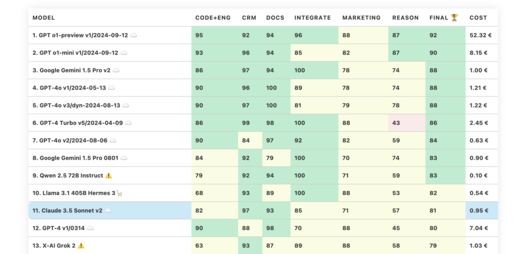
Compared to the previous version of Sonnet 3.5, this version shows improved instruction-following and enhanced capabilities with code, both in writing and handling more complex engineering tasks.
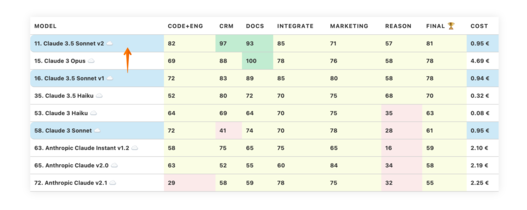
Claude 3.5 Sonnet v2 is overall a decent model, but you can get better quality for lower price. For example, by using GPT-4o or running a local Qwen 2.5.
Claude 3.5 Haiku is another improvement in the Haiku series. The model has improved scores across the board (except the Code+Engineering category). The biggest jump was in Reason: from 35 to 68! This is the highest Reason score for all Anthropic models. Could this point towards a new architecture in the next Claude series?
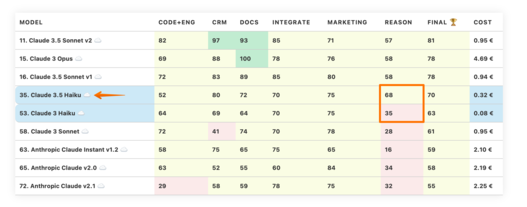
Additional facts to support this theory: Haiku model was the last one to come out, plus it costs 4x times more than the previous Haiku version. Cost structure changes in LLMs are usually aligned with the underlying architectural changes.
Because of the price hike, Haiku is no longer in the “smart and extremely cheap” category. At this point you can find better models like GPT-4o mini or Google Gemini 1.5 Flash 8B.
Overall trend of quality increases within the model ranges - continues. Let’s see if the improved Reason will show up in the other model releases from Anthropic.
Trends
Speaking of the trends, take a look at this interesting meta-trend. OpenAI, Google and Sonnet within last two months have introduced new lower-tier models into higher pricing tiers. This make the charts look as is the LLM performance is actually degrading within these tiers.
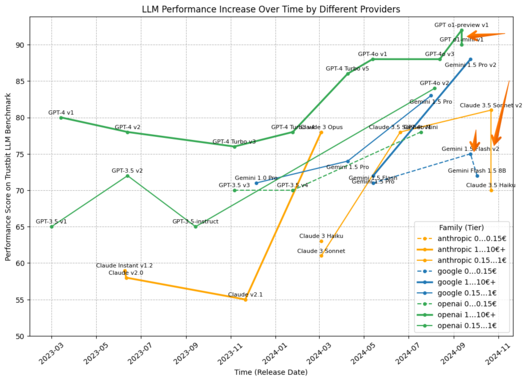
This could potentially mean a combination of three things:
LLM Providers are starting to optimise their price offerings based on Cost and usage.
It isn’t anymore possible to compete on quality without starting to increase compute resources (could we be hitting the limits of transformers architecture?)
Our price brackets for categories were not chosen well. We’ll need to redo the entire chart.
And if we plot Gemini 1.5 Flash 8B on the map of locally-capable models, the picture looks like the one below, marking a nice performance jump in the State-of-the-Art.
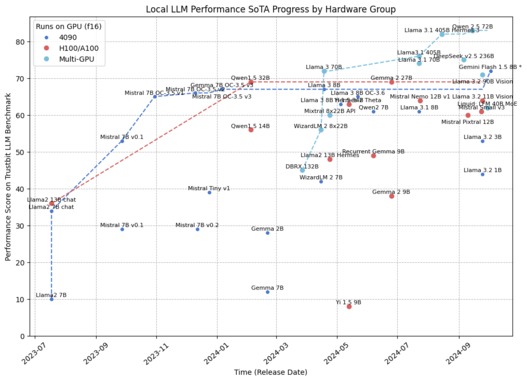
Let’s see how things continue into November 2024. We will keep you updated!
Transform Your Digital Projects with the Best AI Language Models!
Discover the transformative power of the best LLMs and revolutionize your digital products with AI! Stay future-focused, boost efficiency, and gain a clear competitive edge. We help you elevate your business value to the next level.

Martin Warnung
martin.warnung@timetoact.at
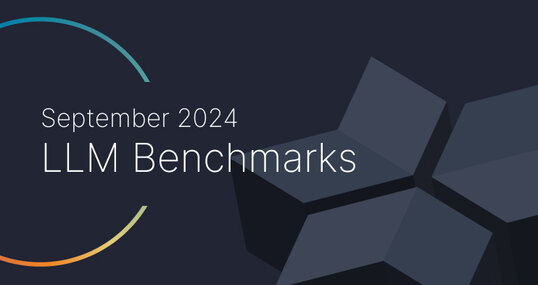
ChatGPT & Co: LLM Benchmarks for September
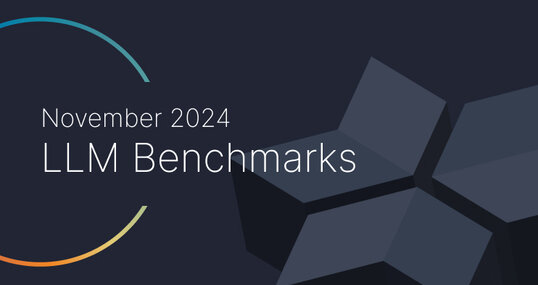
ChatGPT & Co: LLM Benchmarks for November
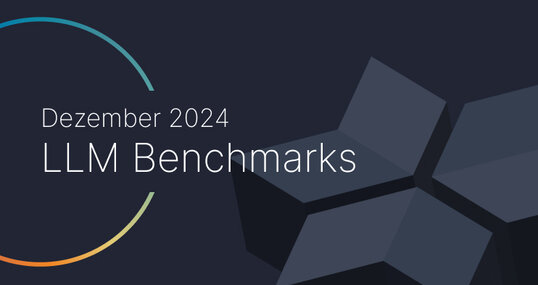
ChatGPT & Co: LLM Benchmarks for December
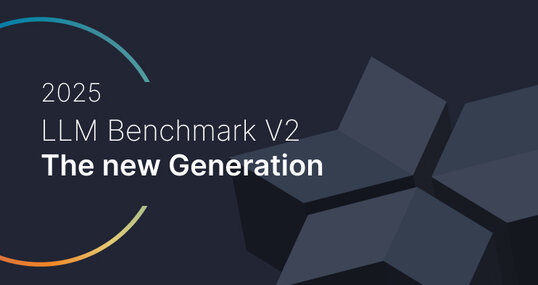
ChatGPT & Co: LLM Benchmarks for January

LLM Performance Series: Batching

Open-sourcing 4 solutions from the Enterprise RAG Challenge

AI for social good

8 tips for developing AI assistants
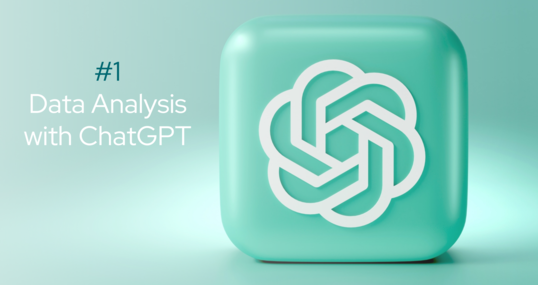
Part 1: Data Analysis with ChatGPT
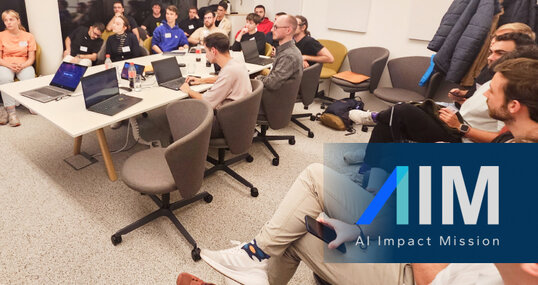
AIM Hackathon 2024: Sustainability Meets LLMs
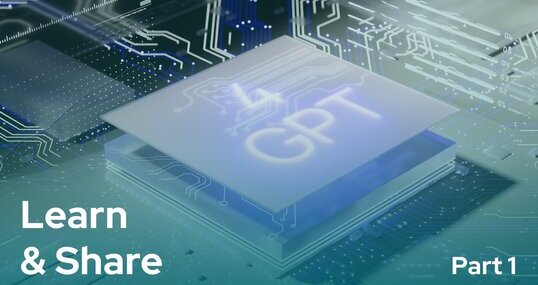
Creating a Social Media Posts Generator Website with ChatGPT

Common Mistakes in the Development of AI Assistants
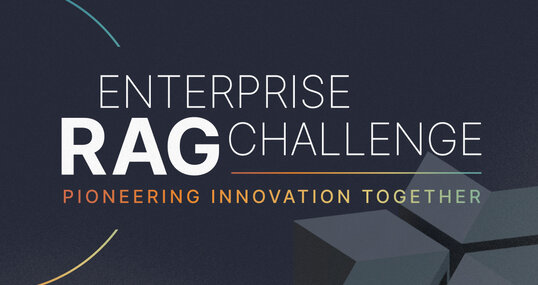
AI Contest - Enterprise RAG Challenge
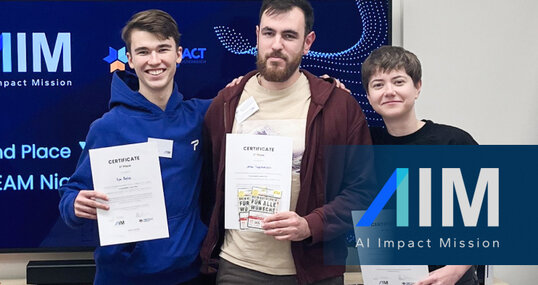
Second Place - AIM Hackathon 2024: Trustpilot for ESG

Strategic Impact of Large Language Models

Let's build an Enterprise AI Assistant

So You are Building an AI Assistant?

The Intersection of AI and Voice Manipulation

Part 4: Save Time and Analyze the Database File
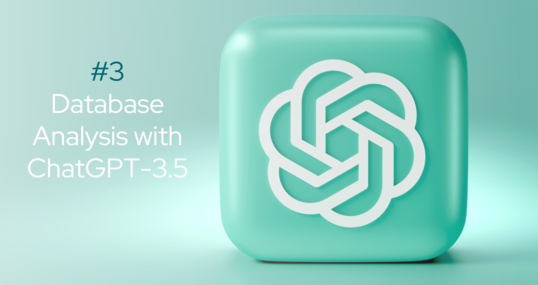
Part 3: How to Analyze a Database File with GPT-3.5
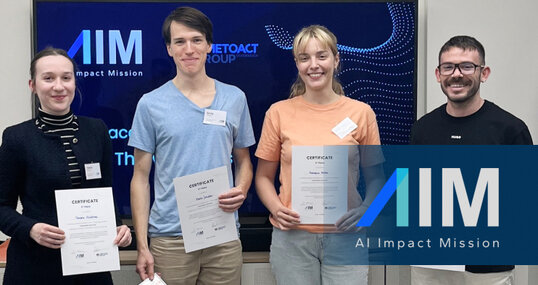
Third Place - AIM Hackathon 2024: The Venturers
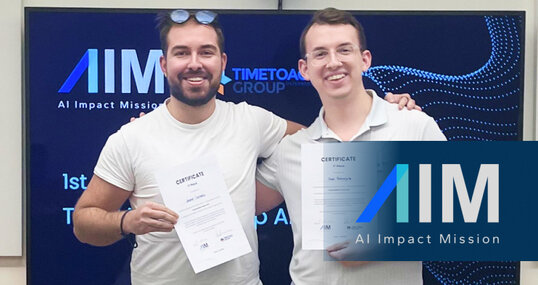
SAM Wins First Prize at AIM Hackathon

AI Workshops for Companies
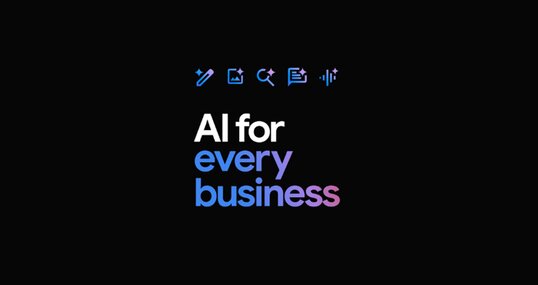
Google Workspace: AI-supported work for every company

Crisis management & building a sustainable future with AI

Expanding Opportunities with Generative AI

The ROI of Gen AI

License Management – Everything you need to know

Graph Technology

License Plate Detection for Precise Car Distance Estimation

IBM Cloud Pak for Data Accelerator

Responsible AI: A Guide to Ethical AI Development

Google Threat Intelligence

Database Analysis Report

5 Inconvenient Questions when hiring an AI company
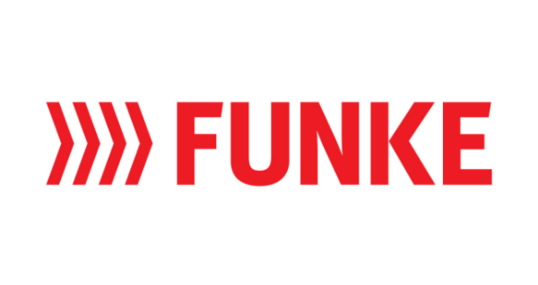
Managed service support for optimal license management

AI & Data Science

Standardized data management creates basis for reporting

Interactive online portal identifies suitable employees

Using NLP libraries for post-processing

Artificial Intelligence in Treasury Management

Using a Skill/Will matrix for personal career development

Building A Shell Application for Micro Frontends | Part 4

Automated Planning of Transport Routes

Flexibility in the data evaluation of a theme park

Advanced Admin Trial

Running Hybrid Workshops

Introduction to Functional Programming in F# – Part 7

Machine Learning Pipelines

Revolutionizing the Logistics Industry

Event Sourcing with Apache Kafka

Boosting speed of scikit-learn regression algorithms

CSS :has() & Responsive Design

How we discover and organise domains in an existing product

So, I wrote a book
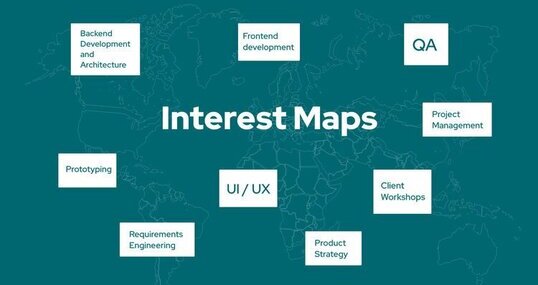
7 Positive effects of visualizing the interests of your team

Introduction to Functional Programming in F# – Part 3

Introduction to Functional Programming in F# – Part 4

Building and Publishing Design Systems | Part 2

Building a micro frontend consuming a design system | Part 3

Introduction to Functional Programming in F# – Part 5

Introduction to Functional Programming in F# – Part 6
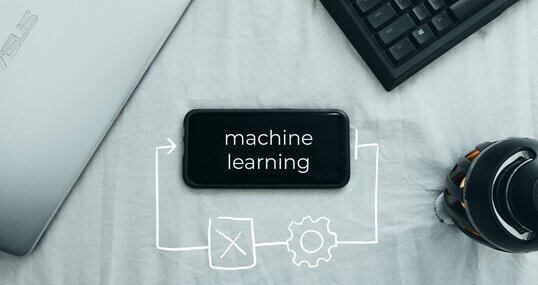
Creating a Cross-Domain Capable ML Pipeline

State of Fast Feedback in Data Science Projects

Part 2: Detecting Truck Parking Lots on Satellite Images

Part 1: Detecting Truck Parking Lots on Satellite Images

5 lessons from running a (remote) design systems book club

Introduction to Functional Programming in F# – Part 2

How to gather data from Miro

Designing and Running a Workshop series: An outline

Designing and Running a Workshop series: The board

Composite UI with Design System and Micro Frontends
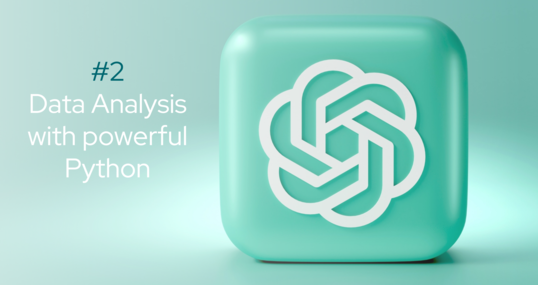
Part 2: Data Analysis with powerful Python

Introduction to Functional Programming in F#

Make Your Value Stream Visible Through Structured Logging

Introduction to Functional Programming in F# – Part 10

Process Pipelines

Introduction to Functional Programming in F# – Part 11

ADRs as a Tool to Build Empowered Teams

Why Was Our Project Successful: Coincidence or Blueprint?
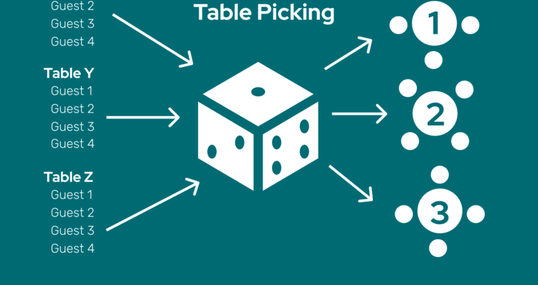
The Power of Event Sourcing

Introduction to Functional Programming in F# – Part 12

Tracing IO in .NET Core

Consistency and Aggregates in Event Sourcing

My Workflows During the Quarantine

Learning + Sharing at TIMETOACT GROUP Austria

My Weekly Shutdown Routine

Innovation Incubator at TIMETOACT GROUP Austria

Innovation Incubator Round 1
